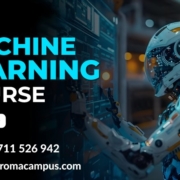How Azure Certification Enhances Machine Learning And Deep Learning Skills?
By now, most ML learners know how to build a model. They’ve seen articles. They’ve practiced in notebooks. They’ve played with datasets. But real work doesn’t stop at accuracy. It begins after that. This is the part where Azure changes the game. For learners in a Deep Learning Online Course, Azure is where raw learning turns into deployable systems. Not dashboards. Not plots. Real APIs. Real monitoring. Real pipelines.
In 2025, companies are not hiring data scientists who stop at training a model. They want people who understand MLOps, deployment, and cost-efficient scaling. They need engineers who can work inside Azure and ship fast. Azure certifications prove that. The demand here isn’t for experimentation. It’s for delivery. That’s why learning ML is no longer enough. You need to certify your ability to apply for it.
Azure certification is about skills that make ML work in the cloud. It doesn’t just test if you can build a model. It checks if you can keep it running. That’s the real skill gap most ML courses leave out.
You Learn to Think in Pipelines
Azure forces you to think about how data moves. You stop thinking in single notebooks. You start thinking in stages. You see where data comes from. You label it. You split it. You transform it. Then you train. Then deploy. Then monitor.
This way of thinking isn’t taught in basic tutorials. But in the real world, this is the only way ML survives.
You’ll learn about Pipeline Parameter, Pipeline Step, Dataset, and Datastore. This breaks your habit of re-running cells in notebooks. It builds system-level thinking. The kind companies pay for.
People who complete a Machine Learning Online Course often miss this structure. It teaches how to automate, test, and version your workflows. That matters more than model tuning.
Deep Learning is Scalable on Azure
You already know how to train a CNN. But how do you train it on 8 GPUs? How do you schedule training to run every week? How do you cache data to avoid reloading from scratch?
Azure helps you answer these.
You learn to define computer targets. You pick between CPU, GPU, or low-cost clusters.
You write scripts that run inside containers. You track loss, latency, and performance live from the dashboard.
It integrates directly with TensorFlow and PyTorch. No code changes. Just configurations. You learn how to register models and move them across environments. You also deploy deep learning models with autoscaling and logging.
These are the tasks actual AI engineers do. And that’s why in Hyderabad, where AI is used in OCR, language translation, and video analytics, companies now prefer Azure-certified developers. It’s not just a badge. It’s proof of delivery-readiness.
People from Azure Machine Learning Certification programs are now leading deployment teams — because they know more than the model. They know the machine behind the model.
Real MLOps Begins with Azure
Azure teaches you what breaks. And how to fix it. That’s what MLOps is about.
You learn how to monitor a deployed model. You set alerts when predictions drift. You learn to roll back models. You track which version was deployed when. You tie training scripts to GitHub. You write YAML to automate pipelines. You can run A/B tests between models. And track which version won.
| Stage | Traditional ML | Azure ML Certification Skill |
| Data Collection | Manual CSV | Blob + DataFactory Pipelines |
| Model Training | Notebook Cell | Script + Compute Cluster |
| Deployment | Flask App | Docker + AKS or ACI |
| Monitoring | None or Logs | Azure Monitor + Alerts |
| Rollback | Re-train | Model Registry Rollback |
This lifecycle thinking is often missing in courses. Even those titled Machine Learning Online Course or Deep Learning Online Course don’t cover what happens when the model fails. Azure does. That’s why MLOps skills are in demand.
Certification Projects Mirror Real Work
You don’t just read theory. You solve tasks. You deploy models that predict values, classify images, or analyze text. But the value is not in the model. It’s in how it runs. Is it secure? Is it fast? Is it monitored?
You’ll use Azure CLI to push scripts. You’ll define environments in inferenceConfig. You’ll wrap models into scoring scripts. You’ll run automated ML to compare 20 models in one run. You’ll track which one had the best F1-score. And deploy it with one click.
This is not toy code. It’s industrial. It’s tested. It’s scalable.
That’s why people in Gurgaon, where banking and logistics firms are adopting AI, are now asking for certified engineers. These firms need low-latency models that integrate with APIs. Not just research code. Certifications prove that you’re trained to handle that pressure.
The Azure Machine Learning Certification ensures you don’t just learn concepts. You learn how to deliver results.
Key Takeaways
- Azure certifications focus on real AI deployment
- You learn how to automate, monitor, and scale ML pipelines
- Deep learning models are easier to build, deploy, and scale using Azure tools
- Cities like Bangalore, Hyderabad, and Gurgaon now prefer cloud-trained AI engineers
- Courses alone may teach you ML, but Azure teaches you how to ship it
Sum up,
In 2025, model accuracy is just one metric. Companies want to know if your model runs at scale. Can it handle traffic? Can it recover from failure? Can it retrain itself? If you’re coming from a Machine Learning Online Course or deep learning bootcamp, you likely know how to build models. But not how to run them. That’s where Azure makes you industry-ready. The certification connects theory with cloud reality. And that connection is what turns learners into engineers.

